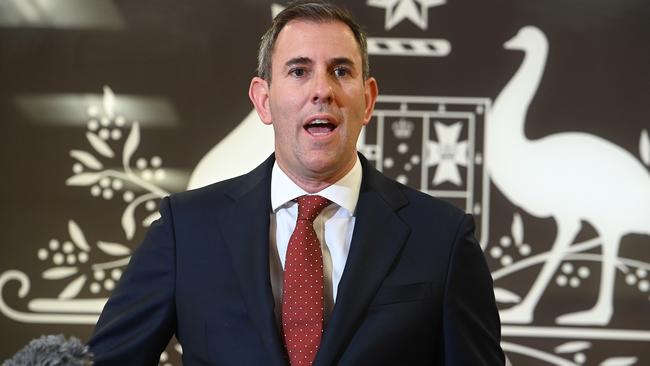Sticky inflation keeps pressure on RBA
Homeowners will endure further mortgage pain after CPI figures revealed the Reserve Bank’s key inflation indicator is back to the same level as January, as energy rebates fail to mask underlying price pressures.

You can now listen to The Australian's articles. Give us your feedback.
Homeowners will endure at least another six months of mortgage pain after consumer price index figures revealed the Reserve Bank’s key inflation indicator is back to the same level as January, as energy rebates fail to mask underlying price pressures.
New Australian Bureau of Statistics data on Wednesday revealed headline inflation in the year to July was higher than market expectations at 3.5 per cent, driven by housing, rent, services and gas costs.
Leading economists warned that while CPI was trending downwards, the RBA’s preferred underlying inflation marker was running at 3.8 per cent, which meant “there’s been no progress in reducing the rate” over the past six months.
The central bank came close to hiking the 4.35 per cent cash rate at its August meeting over concerns about the risk of persistent inflation not returning to its 2-3 per cent target by the second half of 2025.
ABS figures show federal and state government energy subsidies and cash rebates artificially fuelled a 5.1 per cent fall in electricity prices in the year to July and 6.4 per cent last month. Gas prices, however, spiked by 5.7 per cent. Without the subsidies, electricity prices in July would have risen by 0.9 per cent.
Housing costs remain a major concern for the Albanese government, with rents increasing 6.9 per cent in the year to July, which is close to a peak of 7.7 per cent, and new dwelling purchasing costs running at 5 per cent.
While some economists predict that sticky inflation could force another rate hike this year, most believe the RBA board will neither lift nor cut rates unless other economic indicators such as jobs weaken or there is a financial crash. Headline inflation is expected to continue falling towards 2.9 per cent in the back-end of the year, but core inflation is projected to sit around 3.6 per cent. ABS data revealed the biggest contributors to the 3.5 per cent increase in headline inflation in the year to July were housing (+4 per cent), food and non-alcoholic beverages (+3.8 per cent), alcohol and tobacco (+7.2 per cent) and transport (+3.4 per cent).
Jim Chalmers, who has come under pressure over splits between the government and RBA around forecasting and impacts of budget spending, on Wednesday said inflation had dramatically lowered from the 6.1 per cent inherited by Labor in 2022. “Monthly inflation is now 3.5 per cent (down from 3.8 per cent). That is a four-month low,” the Treasurer said.
“Underlying inflation has gone down from 4.1 to 3.8 per cent. That’s a six-month low.
“We know that people are still under pressure. What we see in these numbers is welcome and encouraging progress in the fight against inflation. But because we know that people are still doing it tough, we’re maintaining a focus on rolling out this cost-of living relief.”
Amid scepticism over government energy rebates distorting high electricity prices, Dr Chalmers said there was “nothing artificial about helping people with their electricity bills”.
Independent economist Saul Eslake said inflation was moving in the right direction and was now “clearly in the 3 range, which it hasn’t been since 2021”.
“Housing costs are still running well ahead of general inflation,” he said. “This month doesn’t include insurance and that’s another area of significant cost pressure for households.
“The main game is seeing it through the Reserve Bank’s eyes. One way of interpreting that (underlying) number is that there’s been no progress in reducing underlying inflation over the last six months. The RBA will hold where they are, bearing in mind they came very close to raising rates in August.”
AMP chief economist Shane Oliver said “it’s a mixed bag”, with both headline and underlying inflation falling above market expectations.
“In a broad sense, you could argue these numbers are consistent with the RBA’s forecasts. Their implied forecast for the September quarter is 2.9 per cent for the CPI and 3.6 per cent for the trimmed mean,” Mr Oliver said. “We’ve already dropped to 3.8 per cent for the trimmed mean. You could argue we’ll probably get to that 3.6 per cent for the quarter in trimmed mean and, given there’s more rebates to come through, we’ll probably get to 2.9 for the headline number this quarter.”
Some economists believe households will need to wait until April for a rate cut but Mr Oliver said “our base case (for a reduction) is February”.
“There’s lots of balls in the air. On one hand, inflation is still relatively sticky and that’s holding the RBA back,” he said. “We are seeing evidence of a softer economy and slower wages growth, but it’s probably not enough yet to give the Reserve Bank confidence to start cutting interest rates.”
Opposition Treasury spokesman Angus Taylor said there was no rate relief in sight, with inflation “homegrown, too high and sticky”. “Core inflation remains stubbornly high at 3.8 per cent. Fruit and vegetable prices have seen their highest rise since December 2022. Since the election, the price of everything has gone up 10 per cent,” Mr Taylor said. “Under Labor, gas is up 33 per cent, electricity is up 14 per cent (even after taxpayer-funded rebates) and rents are up 16 per cent. This year, inflation has fallen in every major advanced economy. In Australia, it hasn’t.”




To join the conversation, please log in. Don't have an account? Register
Join the conversation, you are commenting as Logout